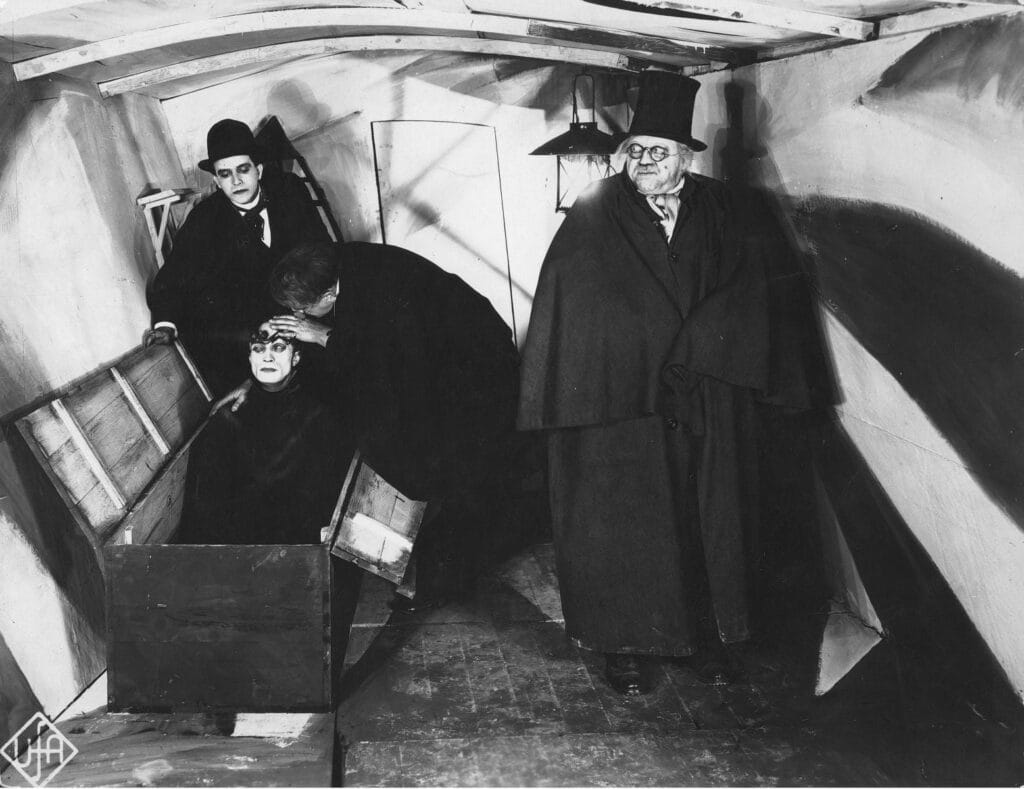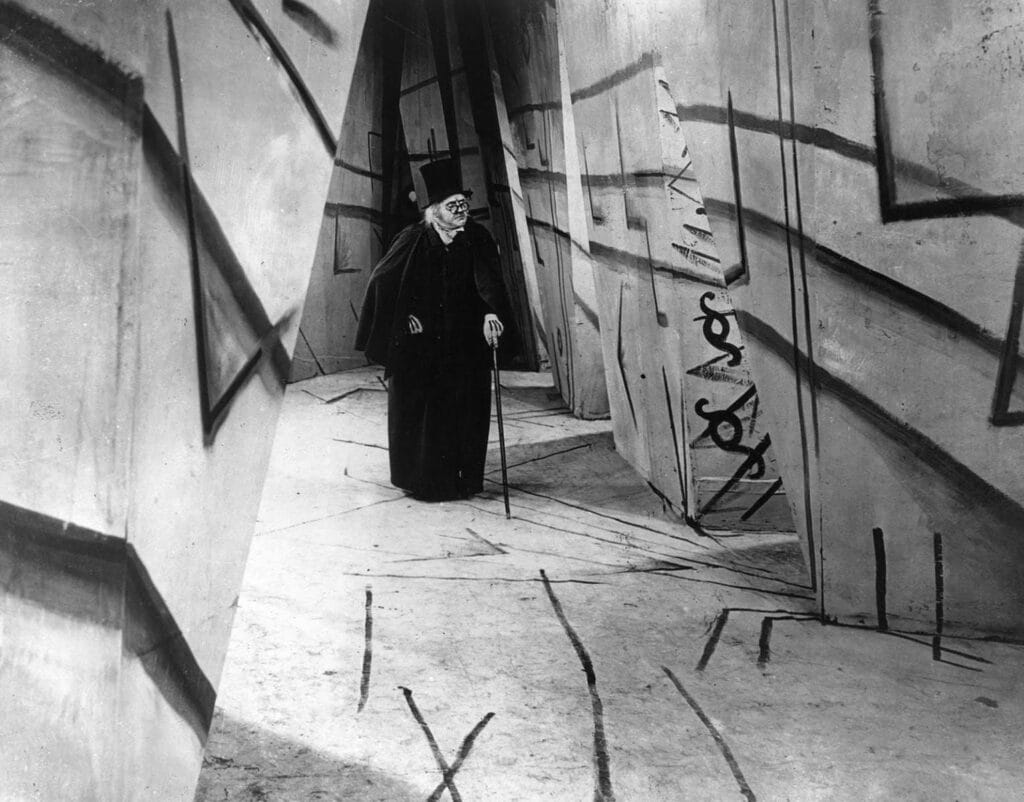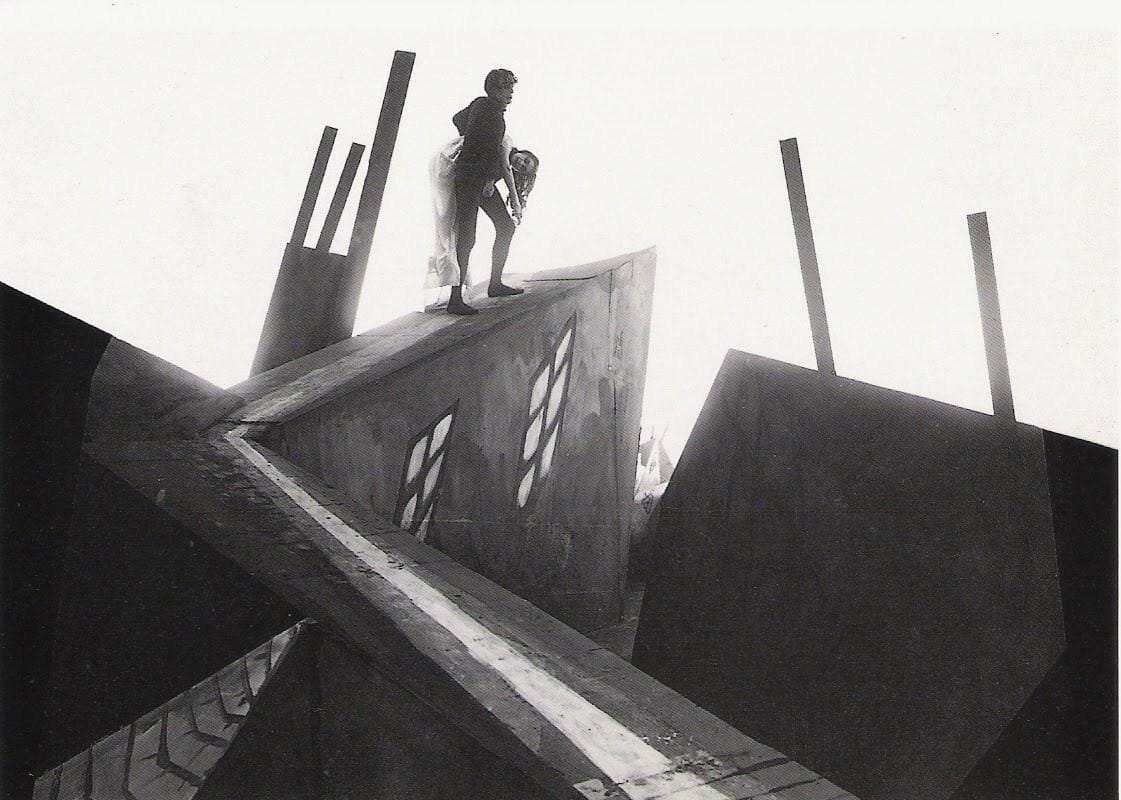The Cabinet of Dr. Caligari is a 1920 German silent horror film that is widely regarded as a pioneering work of expressionist cinema. Directed by Robert Wiene and written by Hans Janowitz and Carl Mayer, the movie is notable for its innovative visual style, intricate plot, and the enduring influence it has had on the development of the horror genre. This article will delve into the history of the film, its unique visual aesthetic, and its lasting impact on the world of cinema.

I. The Making of a Masterpiece
The film’s origins can be traced back to the experiences of its writers, Janowitz and Mayer, who were both deeply affected by the horrors of World War I. Inspired by their shared distrust of authority and their fascination with the subconscious mind, they crafted a story that aimed to depict the dark side of human nature and question the stability of the world around them.
Wiene’s direction brought the script to life, making use of innovative techniques such as chiaroscuro lighting, distorted set designs, and unusual camera angles to create a disorienting, dreamlike atmosphere. These elements, combined with the performances of the talented cast, including Werner Krauss as Dr. Caligari and Conrad Veidt as Cesare, resulted in a film that was both visually stunning and deeply unsettling.
II. Expressionism and the Visual Aesthetic of “The Cabinet of Dr. Caligari”
Expressionism is an artistic movement that emerged in Germany in the early 20th century, characterized by a focus on the emotional and psychological aspects of the human experience. The movement sought to convey these inner feelings and thoughts through highly stylized, often abstract, visual representations.
“The Cabinet of Dr. Caligari” stands as a prime example of expressionist cinema, with its distorted sets, exaggerated shadows, and warped perspectives reflecting the psychological turmoil of its characters. The film’s unique look was achieved through the collaboration of set designers Hermann Warm, Walter Reimann, and Walter Röhrig, who created the now-iconic angular, jagged scenery that has come to define the film’s visual identity.
III. Unraveling the Plot and Themes
The story of “The Cabinet of Dr. Caligari” revolves around the mysterious Dr. Caligari, who arrives in a small German town with his somnambulist, Cesare, who is exhibited in a cabinet. Dr. Caligari uses Cesare to commit a series of murders, casting suspicion on the protagonist, Francis. As Francis investigates further, he uncovers the truth about Dr. Caligari and his sinister motivations.
The film’s narrative explores themes of power, manipulation, and the blurred line between reality and illusion. The twist ending, which reveals that the events of the film may have been a delusion experienced by Francis, adds a layer of ambiguity that has fascinated and puzzled audiences for decades.
IV. Legacy and Influence
“The Cabinet of Dr. Caligari” is often cited as a major influence on the development of the horror genre, inspiring filmmakers like Alfred Hitchcock and Tim Burton with its unsettling atmosphere and striking visual style. The film has also been recognized for its impact on the broader world of cinema, with its innovative techniques and narrative structure influencing genres such as film noir and psychological thrillers.
The film’s enduring popularity has resulted in numerous adaptations, including remakes, stage productions, and literary works. Despite its age and the passage of nearly a century since its release, “The Cabinet of Dr. Caligari” continues to captivate audiences with its enigmatic story and haunting visuals.

As an early example of expressionist cinema and a landmark in the horror genre, “The Cabinet of Dr. Caligari” remains a classic of the silver screen. Its unique visual style, complex narrative, and exploration of dark themes have left a lasting impression on filmmakers and audiences alike, ensuring its place in the annals of film history.
